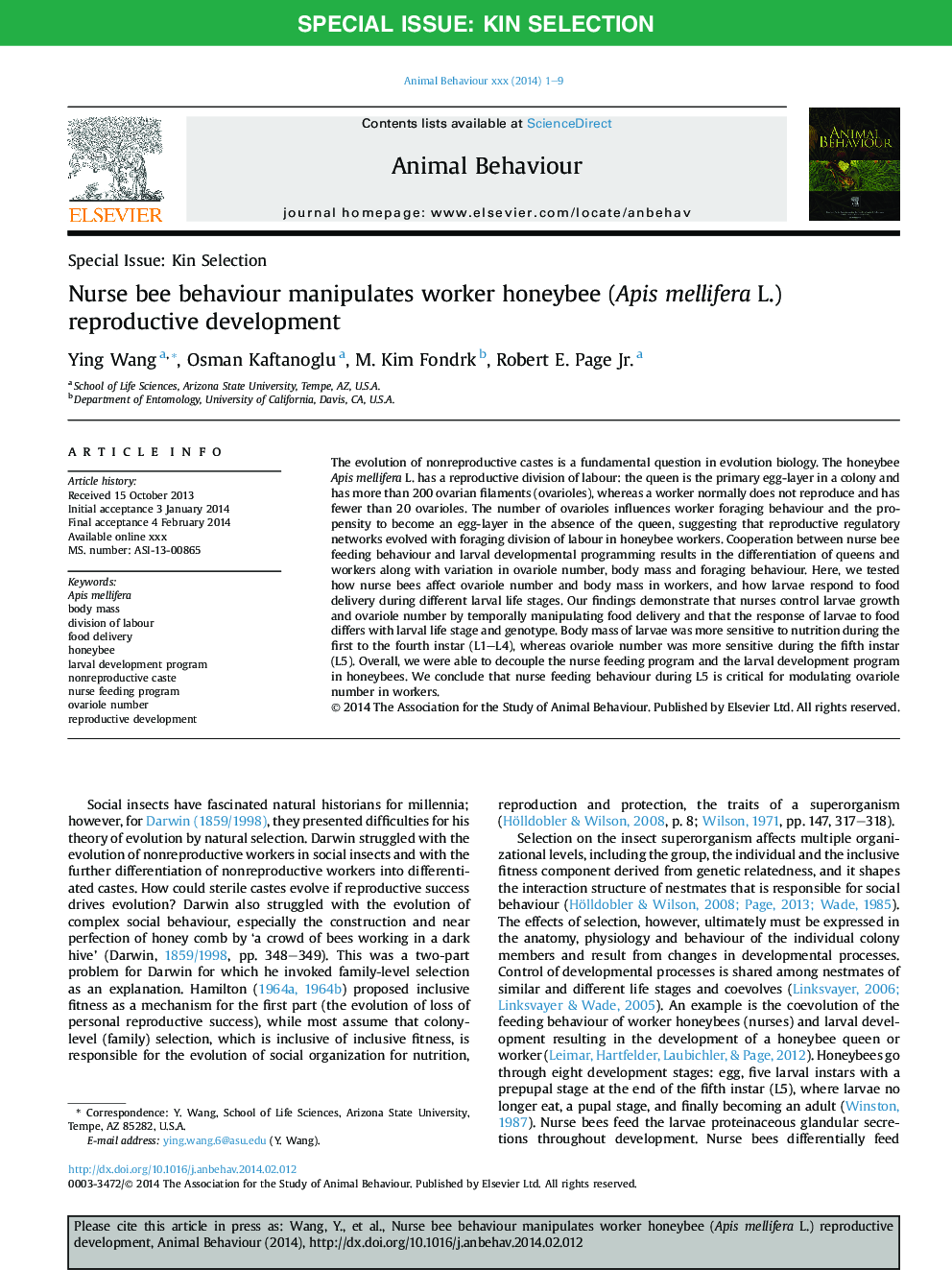| کد مقاله | کد نشریه | سال انتشار | مقاله انگلیسی | نسخه تمام متن |
|---|---|---|---|---|
| 8490586 | 1552236 | 2014 | 9 صفحه PDF | دانلود رایگان |
عنوان انگلیسی مقاله ISI
Nurse bee behaviour manipulates worker honeybee (Apis mellifera L.) reproductive development
دانلود مقاله + سفارش ترجمه
دانلود مقاله ISI انگلیسی
رایگان برای ایرانیان
کلمات کلیدی
موضوعات مرتبط
علوم زیستی و بیوفناوری
علوم کشاورزی و بیولوژیک
علوم دامی و جانورشناسی
پیش نمایش صفحه اول مقاله

چکیده انگلیسی
The evolution of nonreproductive castes is a fundamental question in evolution biology. The honeybee Apis mellifera L. has a reproductive division of labour: the queen is the primary egg-layer in a colony and has more than 200 ovarian filaments (ovarioles), whereas a worker normally does not reproduce and has fewer than 20 ovarioles. The number of ovarioles influences worker foraging behaviour and the propensity to become an egg-layer in the absence of the queen, suggesting that reproductive regulatory networks evolved with foraging division of labour in honeybee workers. Cooperation between nurse bee feeding behaviour and larval developmental programming results in the differentiation of queens and workers along with variation in ovariole number, body mass and foraging behaviour. Here, we tested how nurse bees affect ovariole number and body mass in workers, and how larvae respond to food delivery during different larval life stages. Our findings demonstrate that nurses control larvae growth and ovariole number by temporally manipulating food delivery and that the response of larvae to food differs with larval life stage and genotype. Body mass of larvae was more sensitive to nutrition during the first to the fourth instar (L1-L4), whereas ovariole number was more sensitive during the fifth instar (L5). Overall, we were able to decouple the nurse feeding program and the larval development program in honeybees. We conclude that nurse feeding behaviour during L5 is critical for modulating ovariole number in workers.
ناشر
Database: Elsevier - ScienceDirect (ساینس دایرکت)
Journal: Animal Behaviour - Volume 92, June 2014, Pages 253-261
Journal: Animal Behaviour - Volume 92, June 2014, Pages 253-261
نویسندگان
Ying Wang, Osman Kaftanoglu, M. Kim Fondrk, Robert E. Jr.,